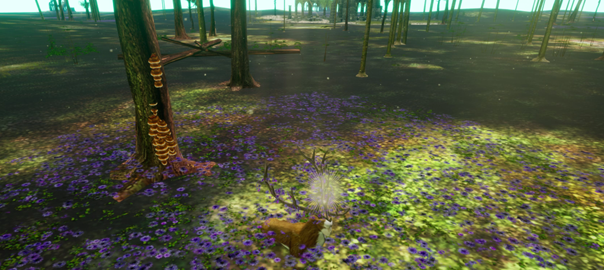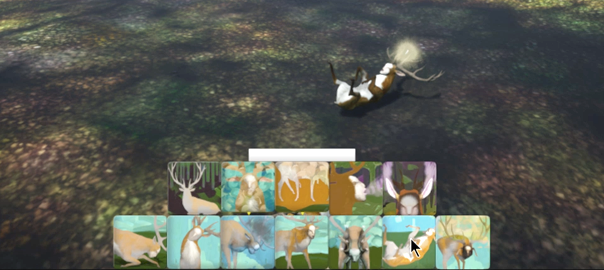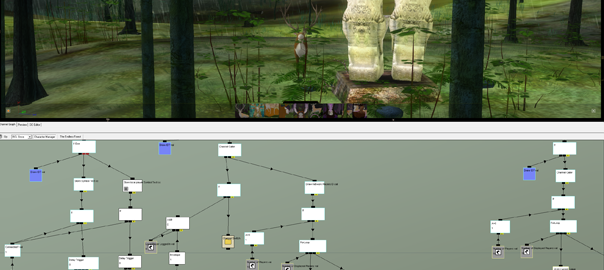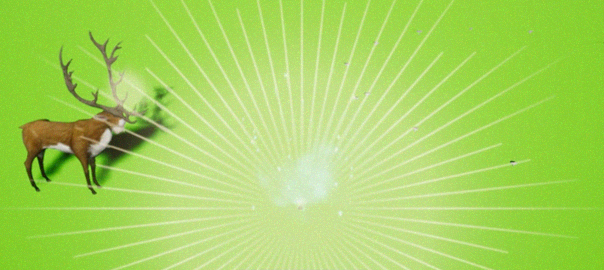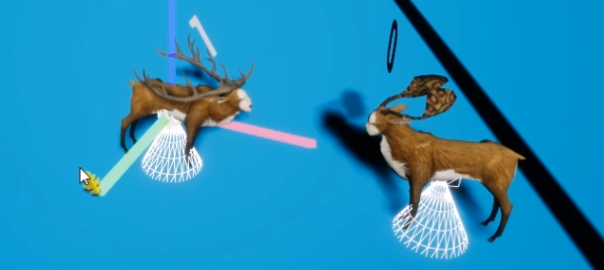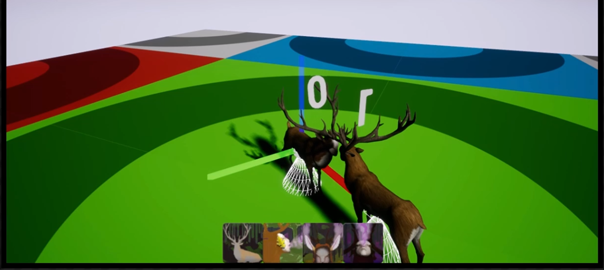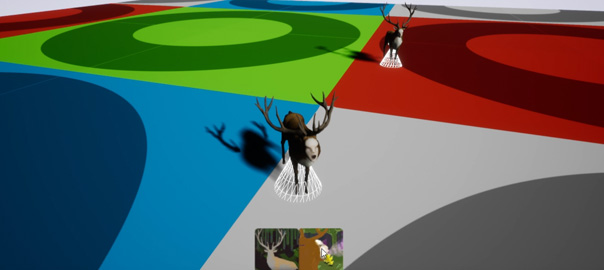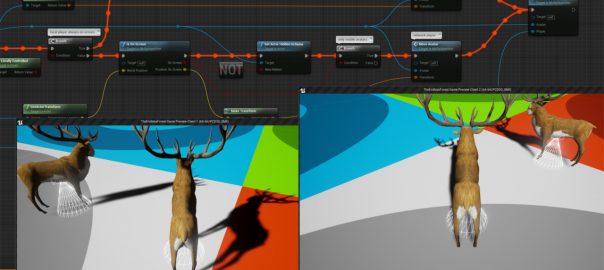Even if progress is made more slowly than we would like, remaking The Endless Forest only becomes more exciting every day. In no small part thanks to the enthusiastic support from the lovely community of players.
We have added and tweaked forest magic, most visibly the ability to pick up flowers from a patch of hyacinths and give them to another deer. This required creating a new system for growing hyacinths, much like the one for creating mushroom circles.
After some searching through our archives, we collected the assets that make up the floor of Phase One of The Endless Forest: meshes and textures. We adapted them to the new tiling system we had created earlier, the system that makes the forest seem endless, and implemented it in Unreal Engine. Back when we had created this floor, shaders barely existed. So we had to come up with all sorts of tricks to get the look we wanted. Since the floor is very big, we needed to tile textures that are much smaller but we wanted to prevent all too visible repetition. And then there’s, of course, the shadows and lights which are also textures. Amusingly, some things that we had set up in the old game but didn’t quite work, now do! The new Endless Forest will not look the same as the old one. But instead of striving to get as close as possible, we will use the new technology (and the old assets) to create something equally beautiful.
Setting up the ground also required the deer to walk over hills and down valleys. We initially set up a system as in the old game that basically checks where the ground is below the deer and then moves the deer there. But then we realized that, as opposed to the old engine, Unreal has a physics simulation built in. So we are now simply using the built-in gravity simulation to keep the deer on the floor. This may break the old bug that allowed some deer to fly. Sorry about that.
We are making maps of the old game to use as a guide for placement of trees, plants and flowers (like the hyacinth patches). We want the forest to feel familiar. But it is virtually impossible to make an exact copy. The systems we used for doing that are integral to the old engine and very opaque. So we’re making an artistic copy rather than an exact one (something like landscape painting). The atmosphere will be the same and things will be more or less where you expect them.
Major features will, of course, be placed exactly where they are now. We found the meshes and textures that make up the church ruin based on the floor plan of the former abbey church in Ename where The Endless Forest was launched. So we created the appropriate materials and implemented it in the remake. It’s good to see it again (although it’s a bit embarrassing to be confronted with the amateurish way it was modeled!).
Remaking things in a new engine is turning out to be a lot more involved than we had anticipated. We have a pretty good system now for retrieving assets. But every element in the game needs to be first researched in the old engine and then rethought for implementation in the new one. Not only does Quest3D work very differently from Unreal Engine, we have also learned a lot about using videogame technology in the past decade. So we want to apply that knowledge. Towards optimizing the game’s performance, for instance (which is the primary requirement for future expansion). Even though I remember struggling over some systems back in the day, sometimes it seems that it takes even more time to re-make them, despite all our experience.
Another reason why progress is slow is that we are also not the young eager game developers that we were back then. We no longer make ourselves sick by working 14 hours a day. We work more efficiently now but that may not make up for raw energy.
And then there are all the other things that we do. We don’t focus on single short-term projects anymore. But instead, we work simultaneously on multiple projects that span many years. One of those is Auriea’s full-time job in the Kunsthochschule in Kassel. Another is Cricoterie, a VR project that will launch in September… until that happens, work on The Endless Forest will be on hold.
In November, on the other hand, there’s a festival in Scotland where The Endless Forest will be featured! It’s organized by some of the people that made the Halloween features in The Endless Forest possible. And this time too, it was they who complete the Second Decade budget. They are interested now in showing both the current game and the remake, in whatever state it will be. We will want to pour some energy into the project to make a good show.
So, expect much excitement in November!
Have a lovely Summer.
―Michaël & Auriea.

